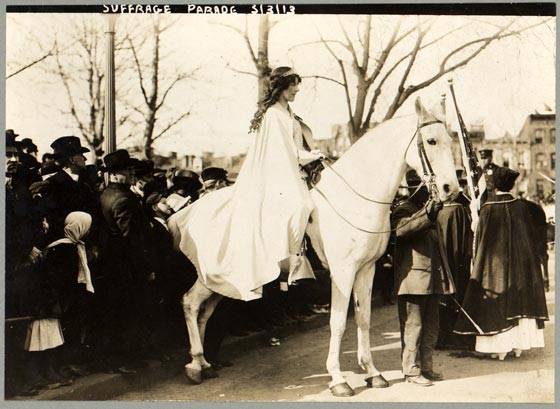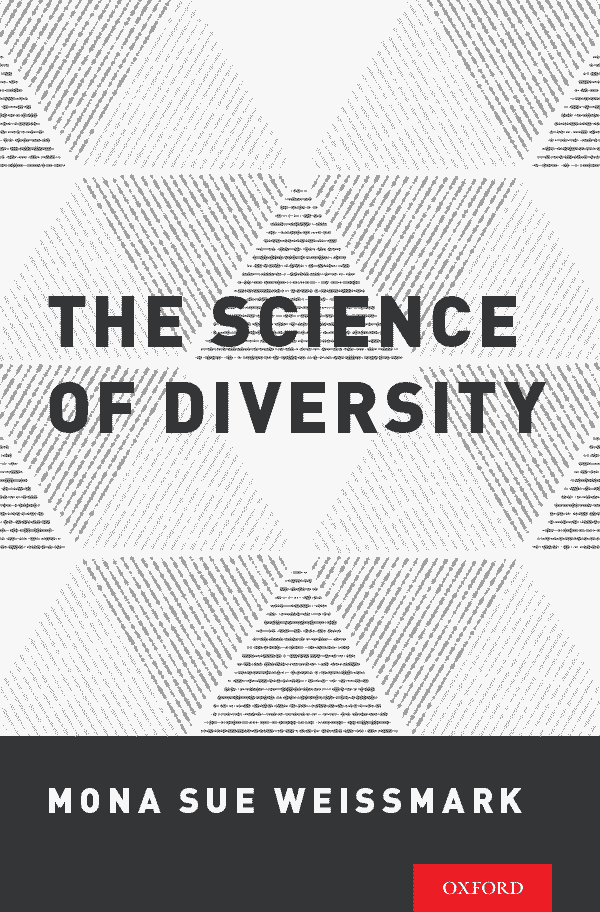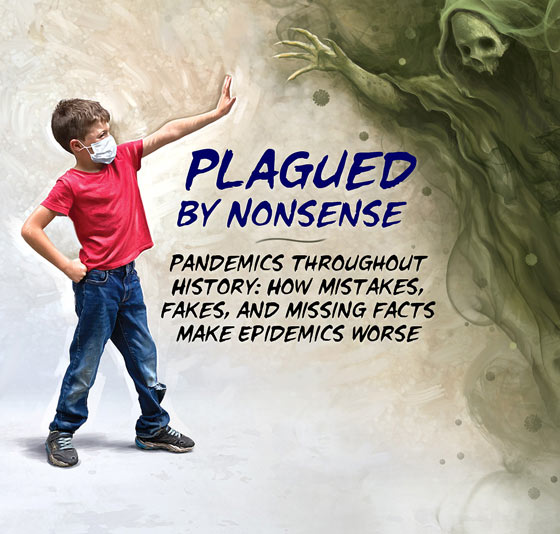
Figure 1, above: Inez Milholland’s March on Washington D.C. On March 3, 1913 the women’s rights advocate Inez Milholland led the march on the capital along with her fellow suffragists Alice Paul and Lucy Burns.4
Today, August 18, marks the 100th anniversary of the adoption of the 19th Amendment to the Constitution of the United States, guaranteeing women the right to vote. We honor that momentous event with an excerpt adapted from the chapter on women’s rights in Dr. Shermer’s 2015 book The Moral Arc: How Science and Reason Lead Humanity Toward Truth, Justice, and Freedom, by Michael Shermer. New York: Henry Holt.
Read the essay below, or listen to it being read by the author, Michael Shermer:
Suffrage & Success
Celebrating the Centennial of Women’s Right to Vote
On August 18, 1920, the 19th Amendment of the United States Constitution was ratified, legally securing the franchise to women. It was the culmination of a 72-year battle that began when Elizabeth Cady Stanton and Lucretia Mott organized the 1848 Seneca Falls conference, after attending the World Anti-slavery Convention in London in 1840 — a meeting at which they had come to participate as delegates, but at which they were not allowed to speak and were made to sit like obedient children in a curtained-off area. This did not sit well with Stanton and Mott. Conventions were held throughout the 1850s but were interrupted by the American Civil War, which secured the franchise in 1870 — not for women, of course, but for black men (though they were gradually disenfranchised by poll taxes, legal loopholes, literacy tests, threats and intimidation). This didn’t sit well either and only served to energize the likes of Matilda Joslyn Gage, Susan B. Anthony, Ida B. Wells, Carrie Chapman Catt, Doris Stevens, and countless others who campaigned unremittingly against the political slavery of women.
Things began to heat up when the great American suffragist Alice Paul (arrestingly portrayed by Hilary Swank in the 2004 film Iron Jawed Angels) returned from a lengthy sojourn in England. She had learned much during her time there through her active participation in the British suffrage movement and from the more radical and militant British suffragists, including the courageous political activist Emmeline Pankhurst, characterized as “the very edge of that weapon of willpower by which British women freed themselves from being classed with children and idiots in the matter of exercising the franchise.”1
Upon her death Pankhurst was heralded by the New York Times as “the most remarkable political and social agitator of the early part of the twentieth century and the supreme protagonist of the campaign for the electoral enfranchisement of women”;2 years later, Time magazine voted her one of the 100 most important people of the century. Thus, when Alice Paul returned from abroad she was ready for action, though the more conservative members of the women’s movement weren’t quite ready for Alice. Nevertheless, in order to attract attention to the cause she and Lucy Burns organized the largest parade ever held in Washington. On March 3, 1913 (strategically timed for the day before President Wilson’s inauguration), 26 floats, 10 bands, and 8,000 women marched, led by the stunning Inez Milholland wearing a flowing white cape and riding a white horse. (See Figure 1 above.) Upwards of 100,000 spectators watched the parade but the mostly male crowd became increasingly unruly and the women were spat upon, taunted, harassed and attacked while the police stood by. Afraid of an all-out riot, the War Department called in the cavalry to contain the escalating violence and chaos.3
It was a gift. A scandal ensued due to the rough treatment of the women and suddenly, “the issue of suffrage — long thought dead by many politicians — was vividly alive in front page headlines in newspapers across the country.… Paul had accomplished her goal — to make woman suffrage a major political issue.”5
In 1917 women began peacefully picketing outside the White House but, once again, they were met with harassment and violence. These Silent Sentinels (as they were called) stood day and night (except Sundays) with their banners for two and a half years but, after the U.S. joined in the war, patience ran thin as it was seen as improper to picket a wartime president. The picketers were charged with obstructing traffic and were thrown — often quite literally thrown — into prison cells where they were treated like criminals, rather than political protesters, and were kept in appalling conditions. Many of the women went on a hunger strike, including Alice Paul, who was viciously force-fed in order to keep her from becoming a martyr for the cause. […]
SCIENCE SALON # 129
Michael Shermer with Mona Sue Weissmark — The Science of Diversity
The Science of Diversity uses a multidisciplinary approach to excavate the theories, principles, and paradigms that illuminate our understanding of the issues surrounding human diversity, social equality, and justice. The book brings these to the surface holistically, examining diversity at the individual, interpersonal, and international levels. Shedding light on why diversity programs fail, the book provides tools to understand how biases develop and influence our relationships and interactions with others. Shermer and Weissmark also discuss:
- What is diversity and how do we understand it?
- How is diversity related to people’s perceptions of fairness and justice?
- Does respect for diversity promote peace and positive change?
- psychology and neuroscience of classification/stereotyping,
- Freudianism to behaviorism to cognitive science to post-cognitive science,
- the self, consciousness, AI, and free will in the context of a science of diversity,
- revenge and justice,
- Israel and Palestine,
- nationalism: ethnic and civic,
- just-world theory of inequality,
- intergenerational justice and reparations,
- BLM and reparations, and
- the future after 2020.
Mona Sue Weissmark is an American clinical psychologist and social psychologist, researcher, and author whose work on diversity and justice has received global recognition. She is best known for her groundbreaking social experiment of bringing children of Holocaust survivors face-to-face with children of Nazis, and later, grandchildren and great-grandchildren of African American slaves with descendants of slave owners. She is also a professor of psychology and author of numerous journal articles and the books: Doing Psychotherapy Effectively (University of Chicago Press); Justice Matters: Legacies of the Holocaust and World War II (Oxford University Press); The Science of Diversity (Oxford University Press).
Listen to the podcast via Apple Podcasts, Spotify, Google Podcasts, Stitcher, iHeartRadio, and TuneIn.
You play a vital part in our commitment to promoting science and reason. If you enjoy the Science Salon Podcast, please show your support.












